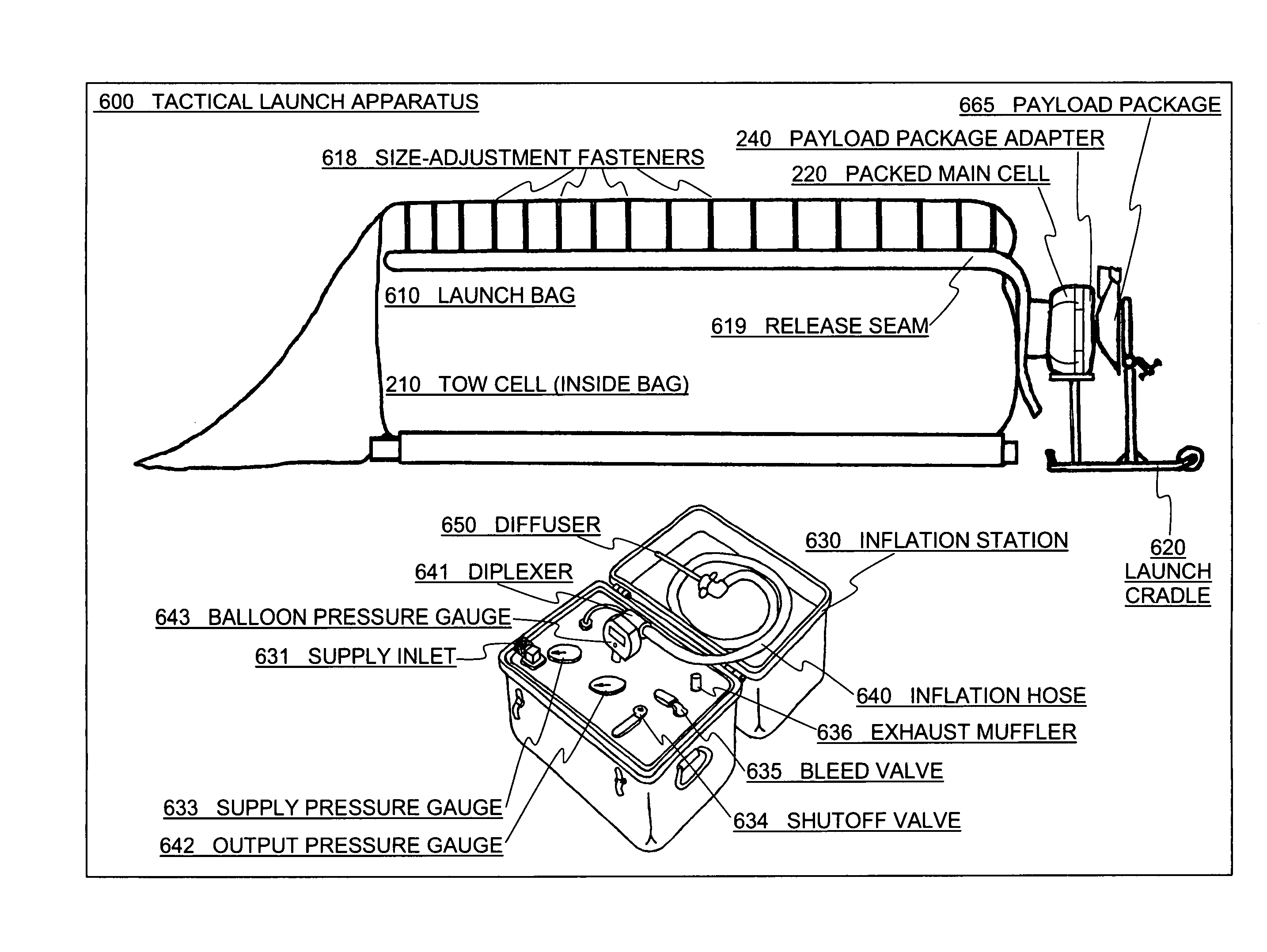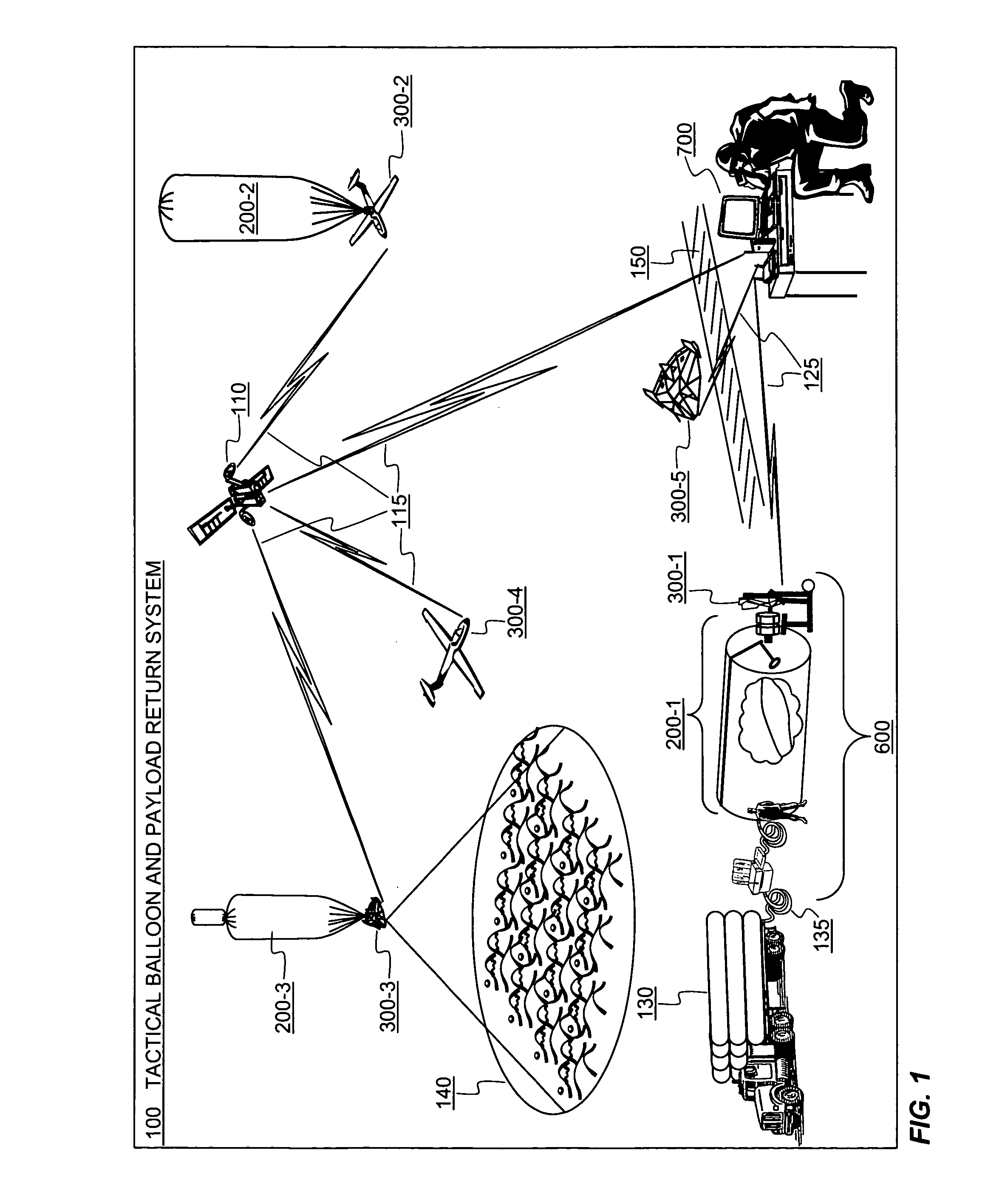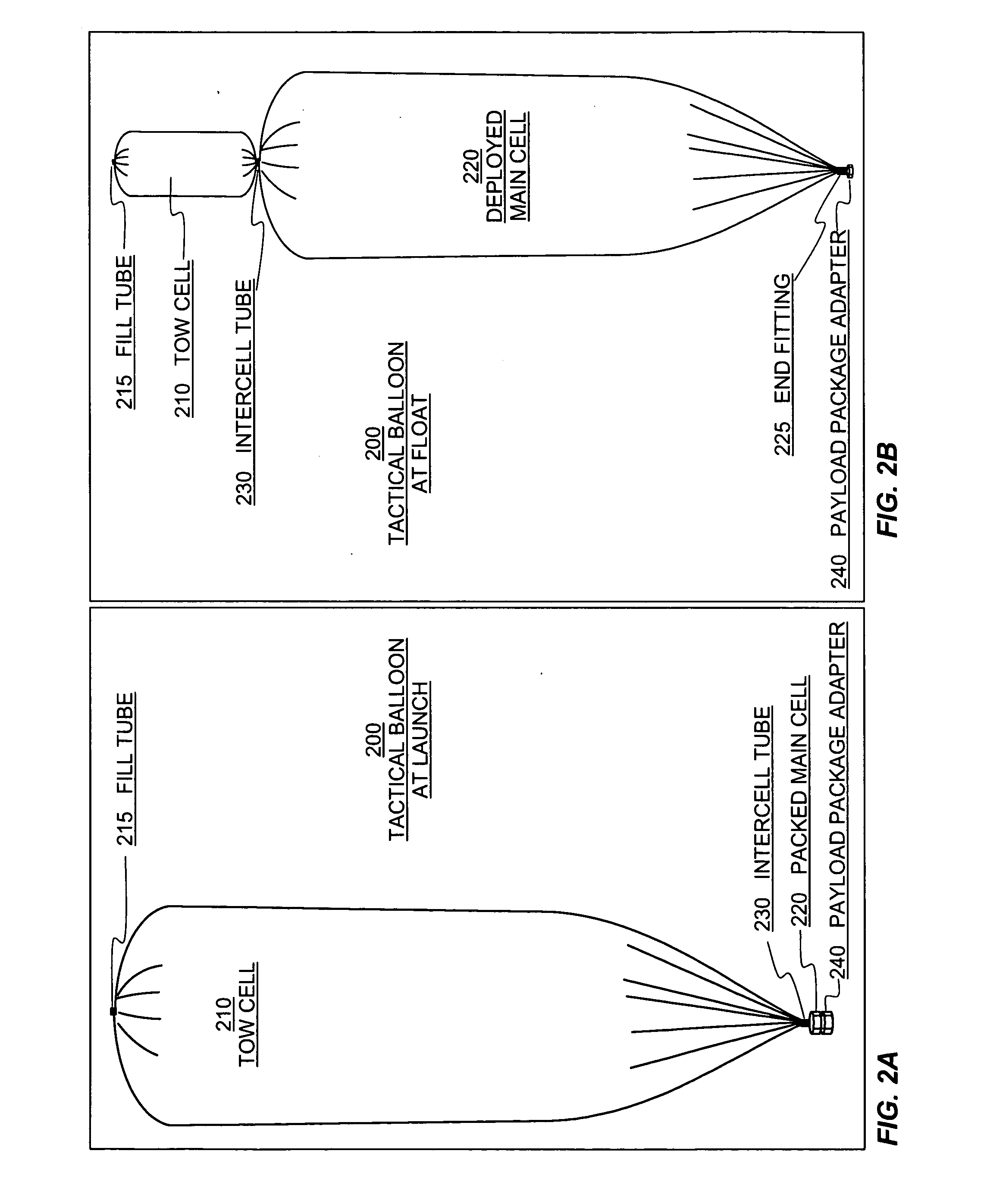System for tactical balloon launch and payload return
a technology for tactical balloons and return systems, applied in the direction of automatic actuation, launch/towing gear, transportation and packaging, etc., can solve the problems of uncontrollable older parachute systems, substantial safety hazards, and large surface area
- Summary
- Abstract
- Description
- Claims
- Application Information
AI Technical Summary
Benefits of technology
Problems solved by technology
Method used
Image
Examples
Embodiment Construction
[0029]The high-level diagram of FIG. 1 shows components of an embodiment of the present invention and their relationships to one another in an example operational context. Tactical Balloon and Payload Return System 100 comprises primarily a lighter-than-air vehicle for low-energy lift to altitude, Tactical Balloon 200; an aerodynamic winged vehicle for payload containment and return, Payload Return Vehicle (PRV) 300; a set of equipment that facilitates launching the flight items, Tactical Launch Apparatus 600; and a set of equipment that facilitates monitoring and controlling the flight items, Ground-Based Control Station 700. Each of these components is detailed in subsequent paragraphs.
[0030]Three instances of Tactical Balloon 200 are shown, representing three distinct states of deployment. Tactical Balloon 200-1 is in the pre-launch configuration, coupled closely with the components of Launch Apparatus 600. Gas Supply 130, depicted as a truck hauling large tanks but potentially a...
PUM
 Login to View More
Login to View More Abstract
Description
Claims
Application Information
 Login to View More
Login to View More - R&D
- Intellectual Property
- Life Sciences
- Materials
- Tech Scout
- Unparalleled Data Quality
- Higher Quality Content
- 60% Fewer Hallucinations
Browse by: Latest US Patents, China's latest patents, Technical Efficacy Thesaurus, Application Domain, Technology Topic, Popular Technical Reports.
© 2025 PatSnap. All rights reserved.Legal|Privacy policy|Modern Slavery Act Transparency Statement|Sitemap|About US| Contact US: help@patsnap.com



